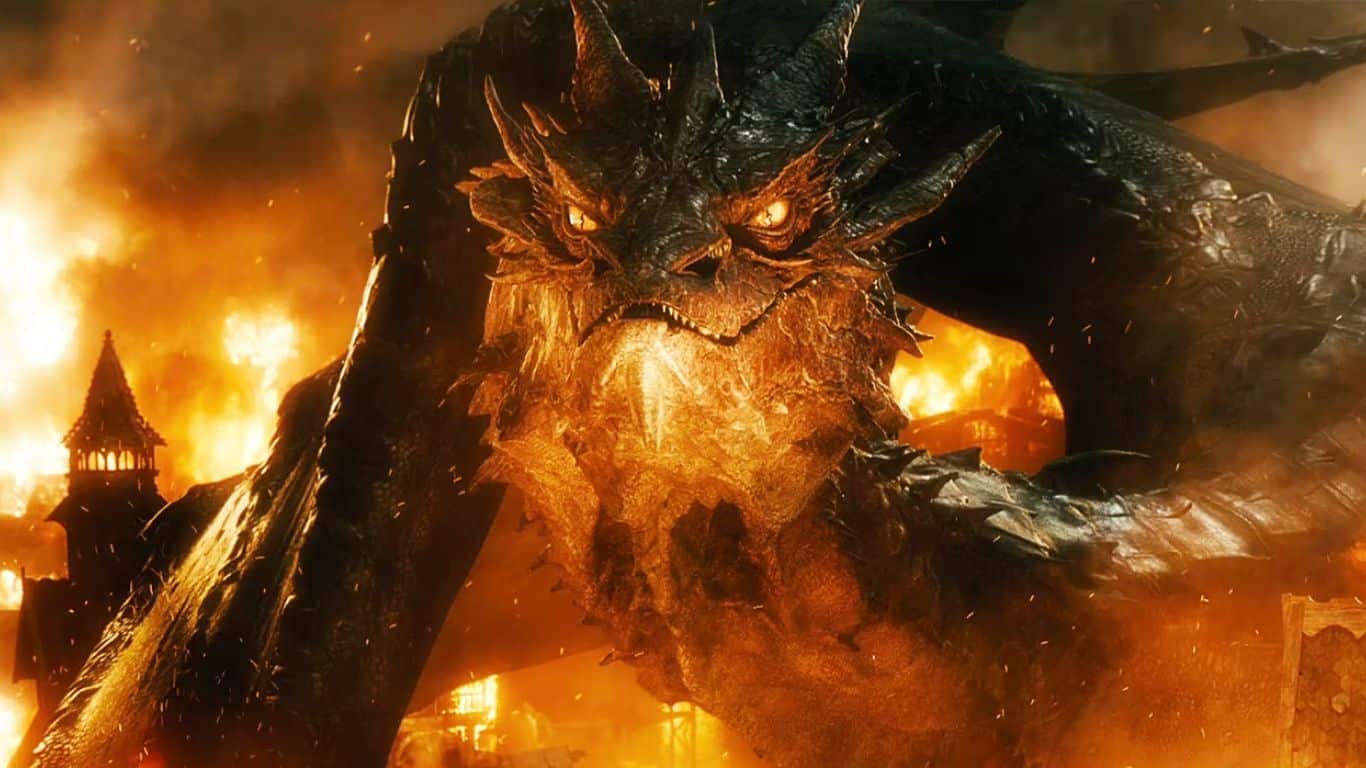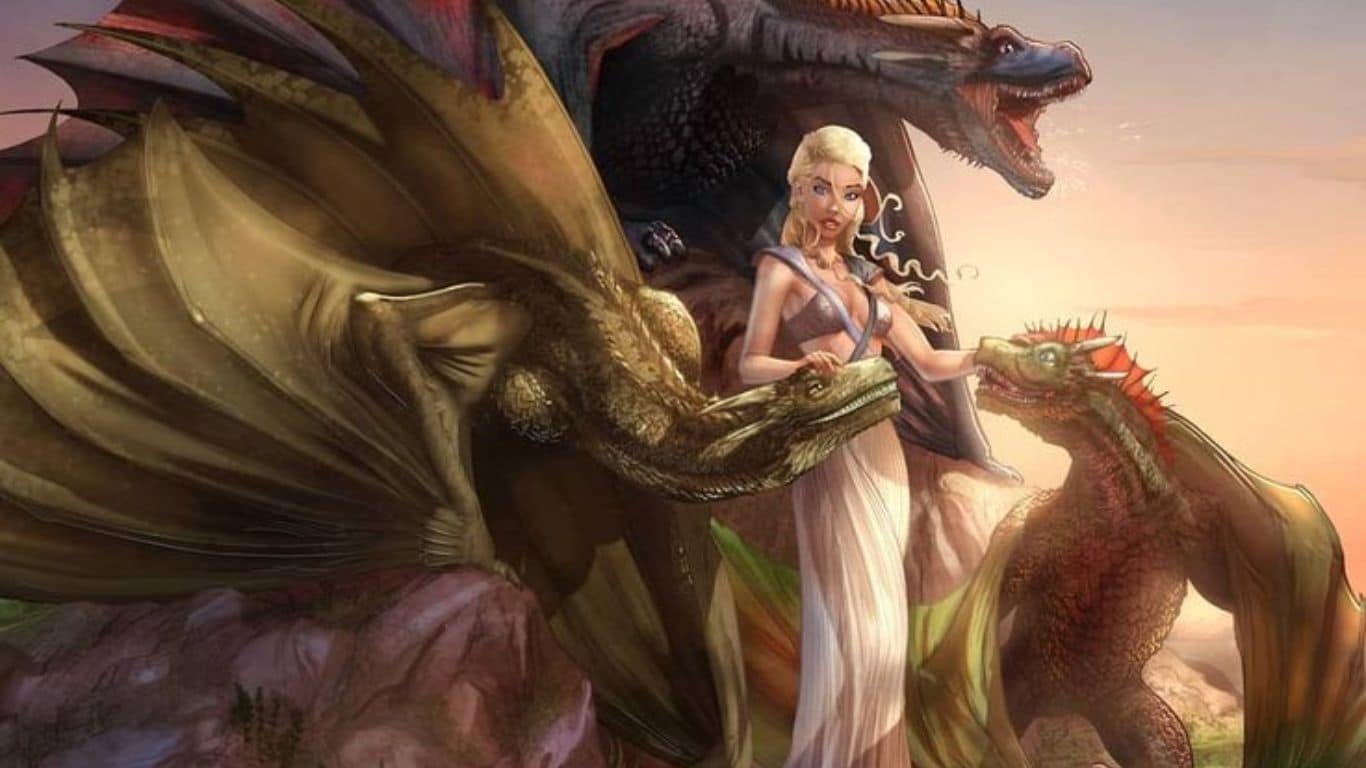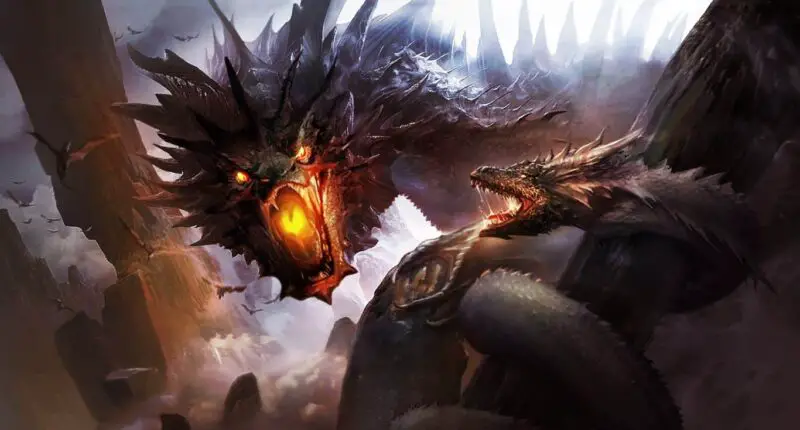Are you ready to delve into the fascinating world of mythical beasts? Today, we invite you to join us on a journey to discover the legendary dragons of mythology and literature. These mythical creatures have captured the imaginations of people for centuries, inspiring countless tales and adventures. From the fiery dragons of Western lore to the serpentine creatures of the East, these majestic beasts have left an indelible mark on our culture and imagination. So join us as we explore the world of dragons, uncover their origins, and learn about the fascinating stories that have been woven around them. Get ready to be enchanted by the magic of these magnificent creatures and lose yourself in the legends that have made them so iconic.
Discover the Legendary Dragons of Mythology and Literature
Fafnir (Norse mythology)

Fafnir was one of three sons of a dwarf named Hreidmar in Norse mythology. The other two sons were Regin and Otr. Hreidmar had a great treasure hoard that included a magical ring, Andvaranaut, which Otr had stolen from the dwarf Andvari.
When Odin, Loki, and Hoenir killed Otr to get the ring back, Hreidmar demanded compensation. The gods gave him enough gold to cover Otr’s body, but Loki had also taken some gold from Andvari and used it to pay his own ransom. Andvari cursed the gold, saying that it would bring death to anyone who possessed it.
Regin convinced his brother Fafnir to kill their father and take the treasure for himself. Fafnir became a dragon as a result of the curse on the gold. He guarded the treasure hoard in a cave and breathed poison over it to keep anyone from stealing it.
Sigurd, a hero who had been raised by the dwarf Regin, was eventually tasked with killing Fafnir and retrieving the treasure. Sigurd was successful in slaying Fafnir with a magical sword and taking the treasure, but he was eventually betrayed by Regin, who wanted the treasure for himself. He killed Regin and gave the treasure to his own people.
Smaug (The Hobbit)

Smaug is one of the central antagonists in J.R.R. Tolkien’s novel “The Hobbit”. He is a powerful and cunning dragon who lived in the Lonely Mountain, where he hoarded a vast treasure of gold and jewels. Smaug is described as being immense in size, with red-gold scales, wicked claws, and a barbed tail.
The dwarves who originally inhabited the Lonely Mountain were driven out by Smaug when he attacked and captured their treasure. Years later, a company of dwarves, led by Thorin Oakenshield, along with the hobbit Bilbo Baggins, set out to reclaim their home and treasure from Smaug.
Smaug was highly intelligent and arrogant, often taunting and challenging his enemies. However, Bilbo was able to outsmart Smaug by stealing a valuable cup from the dragon’s hoard and using it to taunt him. This caused Smaug to fly out of the mountain to attack the nearby town, where he was ultimately killed by a skilled archer named Bard, who used a special arrow to pierce his weak spot.
Tiamat (Babylonian mythology)

In Babylonian mythology, Tiamat was a primordial goddess and the embodiment of the chaotic and formless waters from which the world was created. She is often depicted as a multi-headed serpent or dragon, with the number of heads varying depending on the source.
According to the “Enuma Elish,” a Babylonian creation myth, Tiamat and her consort Apsu, who personified the fresh water underground, gave birth to the first generation of gods. However, the younger gods, led by Marduk (Marduk, was believed to be the son of Enki. Enki was revered as a god of wisdom and was associated with fresh, life-giving water), rebelled against their parents and killed Apsu. This angered Tiamat, who then created an army of monsters to defeat the younger gods and restore order.
Marduk, who had become the chief god, challenged Tiamat to a battle and eventually defeated her by using his magic powers to create powerful winds that tore Tiamat’s body apart. From her remains, Marduk created the heavens and the earth, and the world as we know it was formed.
Drogon, Rhaegal, and Viserion (A Song of Ice and Fire)

Drogon, Rhaegal, and Viserion are three dragons from George R. R. Martin’s “A Song of Ice and Fire” book series, which has been adapted into the popular HBO television series “Game of Thrones”.
Drogon is the largest and most aggressive of the three dragons, with black and red scales. Rhaegal is named after Rhaegar Targaryen and has green scales. Viserion is named after Viserys Targaryen and has cream and gold scales.
In the series, the dragons are believed to have been extinct for hundreds of years until they were born from the eggs that were gifted to Daenerys Targaryen. They play a significant role in the series, with Daenerys using them as weapons in her quest for the Iron Throne. The dragons are also highly intelligent and fiercely loyal to their mother, and they are capable of breathing fire that can burn through almost anything.
Vritra (Hindu Mythology)

In Hindu mythology, Vritra is a dragon or serpent-like creature who is often depicted as a fierce and powerful enemy of the gods. According to the Rigveda, Vritra was a powerful asura or demon who stole the waters of the world and held them captive in his fortress. This caused a drought and famine across the land, leading the gods to band together to defeat him.
The god Indra, in particular, is credited with slaying Vritra and releasing the waters. In some versions of the myth, Indra uses a thunderbolt weapon to kill Vritra, while in others he uses a magical weapon made from the bones of the great sage Dadhichi.
Vritra is often associated with chaos and drought, and his defeat is seen as a triumph over the forces of disorder and the restoration of balance to the natural world. The story of Vritra has been retold in many forms in Indian literature and art, and the character of Vritra has also been referenced in popular culture, including in video games, comic books, and movies.
Norberta (Harry Potter)

Norberta is a Norwegian Ridgeback dragon that appears in J.K. Rowling’s “Harry Potter” series. She is first introduced in “Harry Potter and the Philosopher’s Stone” when Hagrid, the gamekeeper at Hogwarts School of Witchcraft and Wizardry, illegally acquires an egg from a mysterious stranger and hatches it in his hut. The egg hatches into Norberta, and Hagrid raises her in secret.
As Norberta grows bigger and more dangerous, Hagrid becomes unable to keep her hidden, and the trio of Harry, Ron, and Hermione helps him to smuggle Norberta out of Hogwarts and into the care of Ron’s older brother Charlie, who works with dragons in Romania.
Norberta later appears in “Harry Potter and the Deathly Hallows” when Harry, Ron, and Hermione visit Gringotts Wizarding Bank and encounter a dragon guarding the vaults. It is implied that this dragon may be Norberta, as Charlie had told Ron that he had released her into the wild.
Norberta is described as being very large and having black scales, yellow eyes, and long, spiny wings. She is also known for her fiery breath and her ferocity, which makes her a dangerous creature to handle.
Jörmungandr (Norse Mythology)

In Norse mythology, Jörmungandr, also known as the Midgard Serpent, is a giant sea serpent and one of the children of the trickster god Loki and the giantess Angrboða. Jörmungandr is said to be so large that he encircles the entire world, biting his own tail.
Jörmungandr is considered one of the most fearsome and dangerous creatures in Norse mythology. According to legend, he was cast into the ocean by Odin, who feared that he would one day cause great destruction. It is said that when Jörmungandr releases his tail, it will signal the beginning of Ragnarok, the apocalyptic battle between the gods and the giants.
Despite his fearsome reputation, Jörmungandr is also regarded as a symbol of the natural world and the power of the sea. The legend of Jörmungandr has been retold in many forms, including in popular culture such as video games, books, and movies.
Eustace Scrubb (The Voyage of the Dawn Treader)

Eustace Scrubb is a character in C.S. Lewis’s “The Chronicles of Narnia” series, specifically in the third book, “The Voyage of the Dawn Treader.” Eustace is initially portrayed as an insufferable, selfish and greedy boy who enjoys bullying his cousins, Edmund and Lucy Pevensie, who are also protagonists in the series.
During the course of the story, Eustace accompanies Edmund and Lucy on a voyage aboard the ship called the Dawn Treader, which sails to the eastern end of the Narnian world. One day, while exploring an island, Eustace becomes greedy and tries to claim a large treasure that he finds in a cave, even though the others warn him that it is cursed. As a result, Eustace is transformed into a dragon.
As a dragon, Eustace initially resents his condition and is unable to communicate with his human companions. He is forced to experience firsthand the consequences of his past actions, as he is now shunned and hunted by the inhabitants of the island. Eustace gradually begins to realize the error of his ways and begins to change his behavior, ultimately learning the virtues of humility and compassion.
With the help of the lion Aslan, who is a Christ figure in the story, Eustace is eventually restored to his human form. The experience teaches him a valuable lesson, and he becomes a better person as a result.
Also Read: Mythological Origins of Modern-Day Holidays



